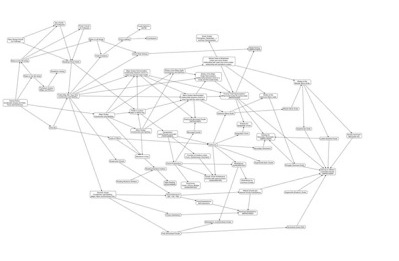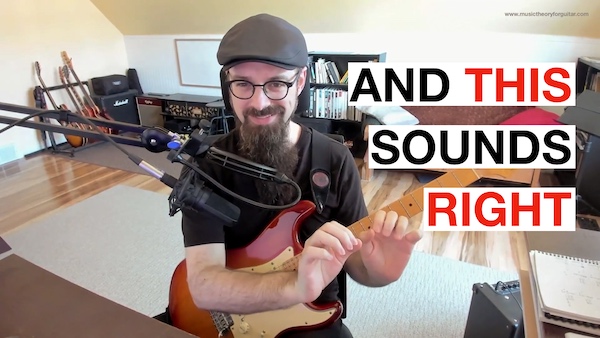Why The Minor Pentatonic Sounds WRONG Over The BLUES Chord Progression


If you were to play over this chord progression: A7, D7, E7 — what scale would you use?
While it may seem like a simple question, like many of life's simple questions it doesn’t have a very simple answer.
In fact, if you answered with any (7-note) scale that exists in this universe, you are wrong. (*)
See, despite being incredibly common, this chord progression has a problem: no key or (7-note) scale actually contains these three chords.
And that means there is no (7-note) scale that can actually be used to play over all of them without certain notes sounding a bit off.
But, what do all those blues players that solo over progressions like this do? Aren’t they using a scale when they solo over this chord progression?
Yes and no.
While there might be a scale you could use as your ‘home base’, you will need to slightly modify that scale depending on which chord you happen to be playing over.
Each chord of this progression deviates from the key in their own unique way, so we need to make that same deviation happen with the scale we use.
So, what modifications should you be making? What are the right notes to change and target over this chord progression?
Watch the video linked below, and I’ll explain exactly what you need to do - chord by chord.
(*) If you answered "what about the chromatic scale?": congratulations! You completely missed the point. I look forward to hear your chromatic Blues solos... (yup, that's irony)
Want to get even better at soloing and improvising on the guitar? You should make sure you know as much as possible about scales and modes. If you want to learn everything there is to know about scales and modes on the guitar, check out my Master of the Modes guitar course.
Video Transcription
Hello Internet, so nice to see you. They told you that on a dominant blues, let's say a blues in A, you can play the A minor pentatonic. And well that's wrong, okay? And you will notice that it's wrong because great players practically never play the simple plain A minor pentatonic on the dominant blues. They just don't, okay?
The pentatonic more or less work, but great players do another thing. They start from a minor pentatonic and then they adapt it on the chord that is playing right now. It's very simple once you know how it's done, okay? And it sounds amazing. You will recognize the sound immediately as soon as you hear it. Now a student asked me exactly how to do all that and here's my answer.
My biggest problem is improvising over blues because you've got three dominant chords and I get caught up in the pentatonic box and basically I'm always stuck in the A minor pentatonic mix and I'd like to know what you could do to get out of that and how you follow the chord changes so it doesn't sound like a pentatonic because a lot of the notes clash when you get to a fifth chord.
If you play an A dominant blues. An A dominant blues will have the A7th, the E7th, the D7 sorry and then some sort of E7 typically with a sharp nine or something okay. You should never actually play the A minor pentatonic because there's always going to be one sour note. Let's review okay.
So I'm playing an A7. You're gonna play an A minor pentatonic very slowly and you guys are gonna raise your hand the moment you think the note is sour. You heard one sour note. If you did not hear any sour note, it's a problem. Okay, the sour note was the natural C, played in a universe natural C, not that one. You hear that again. I mean, if we keep playing eventually and like, okay, but now take that note and just bend it slightly. A bit more, a bit more. Sounds better now, huh? Now, I've been playing that note.
Just play the note a half step above. So don't bend it now, just play it. That would be better, huh? Yes or no? So here's the thing. We are on a dominant blues in A, what we call a standard blues, okay? On the first chord, which is A7, you will not play this C, instead you will play C sharp. So what you want to do is you imagine you're A minor pentatonic, but every time you find a C, you play a C sharp instead.
Mm-hmm
Very slowly let's try that. You don't have to play the whole thing But just play the play something on the pentatonic and when you hit the C, don't hit the C, hit the C sharp.
That's...
Makes sense. So we kind of adapted the scale to that. So the A minor with the tonic, it's a good starting point for the first chord, but it's not correct.
Now, some people will go like, yeah, but that sound on the C natural, it's some of the blues. But if you notice, every good blues player doesn't play that note and leave it there. They always bending it or going somewhere else. They don't stay there. Now, we go on the fourth chord, which is D7, which I like to play D9 because I just like the sound. Okay, let's play the same pentatonic, A minor, and you guys raise your hand when you hear a sour note. So play that in the note, hold it for a moment. Keep going. That one.
The sour note is the G because it conflicts with the F sharp of D7. Play just the G. Play the G. You can feel that. It's like, ugh. So what do we do? We take the G and we move it down to the F sharp because it's a note of the chord. So, you play the F sharp instead. And now, it feels better. Now, you learn all the pentatonic, but rather than hitting a G, you hit an F sharp.
Yeah.
Okay now this looks like a lot of work but what you do is you learn a little bit a little piece of the pentatonic you do it for A7 then for D7 then you improvise a bit and then you expand a little bit okay until you get your bearing but right now very slowly try to play the pentatonic and whenever you're about to hit the G hit an F sharp instead.
Oh.
Yeah, yeah.
Yeah, sorry
Come back, come back, come back. No, no, not the G. The F sharp. That's the G. It's very unnatural at first, right?
It's hard to get past that, sorry. Um... No. Sorry. Yeah, you go. That's it. Makes sense.
This fits the fourth chord right now the fourth chord is probably the least problematic of the three but still you would like to hit that so at this level like what do we do with that is every lick you know you just adapt it or so whenever you would hit the G on the lick you hit an F sharp if you're on the fourth chord on the D7.
If whenever you will hit a C you hit a C sharp if you are on the A7 you just modify the licks to fit the chord the problem is the fifth chord I'm gonna play the fifth chord and you're gonna play the pentatonic and you guys raise your hand when we hit a sour note because the sour note is the A that is the root of the scale and all of you I'm sorry I'm gonna say that all of you when you improvise go back to that root note okay as if as if it's pure sugar and you haven't eaten anything in 30 days.
Okay you always go back to the root note and so you just learn to hear that A note even if it sucks okay so let them play the A that will conflict with the G sharp of the E7 right play a G sharp instead so take the root of E and now in all those situation when I try now in one situation the sour note was a minor third other than a major third in the other two situation the sour note was the fourth of the chord the G over D7 and the A over E7.
But the conflict is always with the third note of the chord and since the third note of the chord it's a pretty important note to understand the chord if you hit that in the solo you're making everything muddy and confused and all this kind of thing it makes sense so now little by little but this doesn't do this right now gonna take a bit of time but you think about that and you replay all your licks but trying to think on what chord you are and modifying.
The note so the A it's a nice starting point but it doesn't fit any of those chords actually and you should never play the pentatonic it's just something we say something some people say no I don't okay to beginners let it just get started but as soon as possible we should actually take care of those small things because it makes a big big big difference in sound.
And if you play these and if you if you play these when you are improvising and you're changing the scale like a little bit as you see because not a big change during an improvised solo you can hear that you're hitting the right note and it sounds completely different yeah makes sense.
Yeah, no that was brilliant. Thank you very much.